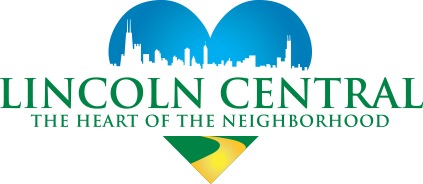Mission
To Inspire People to Join Together for the Social, Cultural, and Physical Enrichment of Our Neighborhood.
A Brief History of Lincoln Central Neighborhood Association
The Lincoln Central Neighborhood Association grew from the Lincoln Central Conservation Association in the late 1950s, the LCNA Articles of Incorporation were signed on November 12, 1959. The LCNA slogan at that time was, “A group of neighbors working together to improve our area.” Those words summarized the group’s main objectives, which were to raise living standards within the community, to retain responsible residents, to attract young families, and to encourage residents to participate in the preservation of the human values and physical characteristics of a revitalized neighborhood.
Early activities focused on urban renewal, a huge issue in those years. LCNA’s concerns included areas where people were being pushed from their homes to make room for developments. Those were turbulent times for the neighborhood.
In the 1970s and 80s, Lincoln Central sponsored the Mohawk Street Fair, a local art fair held at Mohawk and Dickens Streets. It was a true neighborhood affair, with corn on the cob cooked by the sisters of St. Vincent DePaul, and bratwurst cooked by willing neighbors. By the time the fair moved to Lincoln Avenue in the 90s, the way was paved for a multitude of activities.
An outgrowth from the Mohawk Art Fair was the Lincoln Central Music Fest, hosted with the Mid-North Association. It was a success, although some grumblings were stated in letters from members of the community who voiced their displeasure about the upheaval caused. The Fest, along with the Haunted House, brought much-needed revenue to LCNA.
In late 1997, a change in leadership took place that advocated more control over bars and more emphasis on the community. Once in place, the new LCNA developed surveys to ask for neighborhood feedback.
The new agenda covered a multitude of neighborhood issues including permit parking, Royal George Theater parking, development of the former Homemaker’s site, liquor licenses, and a traffic light at Dickens, Cleveland, and Lincoln. A revamp of the newsletter and the website were accomplished. There was even time for a Clean and Green Day.
The early 2000s saw a wave of new concerns such as sidewalk café licenses, the allocation of funds for the general upkeep of Lincoln Central Park, a comprehensive community plan, and preserving the essence of the community while making room for new buildings. And then there were senior housing and subsidized public housing concerns. Lincoln Central Park was renovated, with CDOT doing the rebuild and LCNA paying for plants.
An important movement of those years was the restructuring and official formation of the LCNA Zoning Committee in 2003, “to ensure open and fair processes for developers and homeowners.” The committee has been an important part of LCA’s agenda for all these years, helping to protect the neighborhood. The committee was also an important part of developing two landmark districts, one at Halsted and Armitage and another at Willow and Halsted.
There also was a movement to develop support for neighborhood projects, for example developing guidelines for parkway beatification, which was a goal for LCNA. Money was set aside for upgrades and maintenance of the Bauler playlot, as well as support for a weekly Kids Party. And $1,000 was given to Oz Park for the Scarecrow sculpture.
Innovation has been alive throughout LCNA’s history. In 2005, the change from R4.5 to R5 brought open meetings for neighbors wanting clarity. In 2006, LCNA tackled the graffiti problem. In 2007, a prominent project was a redo of the Fire Station kitchen.
2011 brought a change to LCNA’s agenda when it took over management of the Fire Station Park, thereby adding another park to its oversight responsibilities. A whole new neighborhood project was born, as the park was redesigned into an all-native plant garden, with two major beds—one a wetland, the other, dry. Other beds were made for planting vegetables for neighbors to come and harvest when ripe. And in the center is an herb garden, also for picking by neighbors. The garden has won three Chicago Excellence in Gardening Awards in recent years, recognizing its unique history and development.
Several wide-ranging community events have been hosted by LCNA. One was the History and Vision events designed to bring neighborhood awareness, historical interest, and community education, as well as fellowship and fun. Other community events included Aldermanic candidates held in partnership with the Park West Community Association and the Wrightwood Neighbors Association. A unique partnership is with the Oz Park Advisory Council for a yearly holiday tree lighting in Oz Park. That partnership is in its fourth year.
Several long-standing events are part of LCNA history—notably Howler at Bauler, now in its 8th year. Another is Spring Zing, which grew from a small party for youngsters into a yearly happening. Newer events have been inspired by the Fire Station Park garden, which became a natural gathering place for neighbors: An Evening in the Garden and Summer Sipper.
In recent years, LCNA underwent a branding project that brought the slogan “The Heart of the Neighborhood” to the association and its output. The brand has brought a meaning to everything, as neighbors and friends know LCNA now as the heart of the neighborhood.
